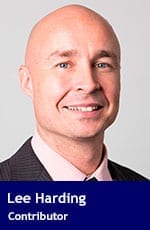 When industry wants science to say something, how does it do it?
When industry wants science to say something, how does it do it?
Last year, The Nation showed us how in its special investigation, How Big Wireless Made Us Think That Cell Phones Are Safe.
In 1993, a lawsuit alleged that cellphones caused a woman’s terminal brain cancer. As wireless stocks headed downward, the industry unleashed a five-fold response.
This tactical plan can be used by any threatened industry on any issue at any time to influence science, regulators, public perception and government policy.
Citizens beware.
The government never tested the safety of cellphones prior to the cancer lawsuit. But just one week after it was launched, Tom Wheeler, president of the Cellular Telecommunications and Internet Association (CTIA) in the United States, announced that cellphones were safe. He also announced the industry would fund research that would “re-validate the findings of the existing studies.” With that, he authored the conclusions of the Wireless Research Technology project before it even began.
The first industry tactic is to buy the science. Biochemistry professor Henri Lai looked at 326 safety-related studies on cellphone use between 1990 and 2005 and found that 67 per cent of independently funded studies found biological damage from cellphone radiation, but only 28 per cent of industry-funded studies did.
Lai participated in the CTIA study. In an interview with Microwave News, he recounted numerous anomalies and apparent industry manipulation of the study, including an attempt to gut its discussion section.
The CTIA massaged the message again after the World Health Organization published its Interphone study in 2000. The study showed that those who used a cellphone for 10 years or longer saw their risk of glioma (a type of brain tumour) increase by 120 per cent.
Yet John Walls, VP for public affairs at CTIA, told reporters that “Interphone’s conclusion of no overall increased risk of brain cancer is consistent with conclusions reached in an already large body of scientific research on this subject.”
Another tactic is to kill the research. Biochemistry professor Dariusz Leszczynski first experienced this in 1999 when he was adjunct professor at Harvard Medical School. He wanted to investigate the effects of radiation that were higher than the government-allowed levels but kept getting overruled by scientists funded by Motorola.
In 2011, Leszczynski said in an interview, “Everyone knows that if your research results show that radiation has effects, the funding flow dries up.” A year later, his employer, the Radiation and Nuclear Safety Authority of Finland, stopped researching the biological effects of cellphones and released him.
The draft version of a National Toxicology Program study in 2016 called cellphone radiation a “probable” or “known” carcinogen with “broad implications for public health.”
Yet when the final version was released in 2018, the study’s senior scientist John Bucher said in a press conference, “I don’t think this is a high-risk situation at all.”
Microwave News editor Louis Slesin wondered openly what changed at NTP?
His best guesses were industry, military and political pressure, as well as leadership changes.
Tom Wheeler, CTIA president from 1992-2004, chaired the Federal Communications Commission in the U.S. from 2013-2017. Meredith Attwell Baker, FCC commissioner from 2009-2011, has presided over CTIA since 2014.
In a Harvard University ethics paper, journalist Norm Alster called FCC a “captured agency,” and cited the CTIA website, which praised FCC for “its light regulatory touch.”
Leave it to big wireless to maintain its message over the airwaves.
Lee Harding is a research associate with the Frontier Centre for Public Policy.
The views, opinions and positions expressed by columnists and contributors are the author’s alone. They do not inherently or expressly reflect the views, opinions and/or positions of our publication.


